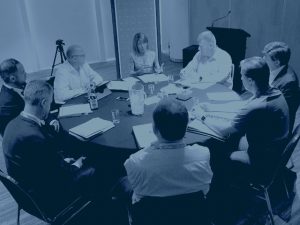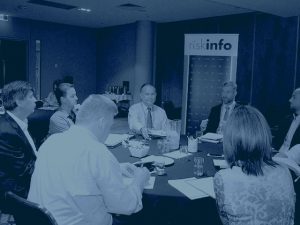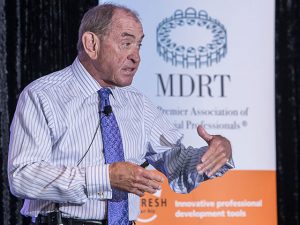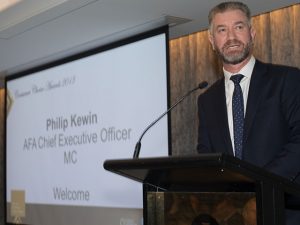The business model for the advisory practice of the new era is in the making today – and the advice business that can’t reinvent itself to accommodate this new era has no future at all, according to Mentor Education Group’s MD, Mark Sinclair and its Chair, Adjunct Professor – and legendary adviser – Jim Taggart…
Although it’s difficult to predict what the future holds for the financial advisory sector post 2020 there is one certainty and that is anything that doesn’t create value for the client has no room inside the business.
The business model for the advisory practice of the new era is in the making today – and the advice business that can’t reinvent itself to accommodate this has no future at all.
For all the upheaval associated with the Royal Commission, FASEA and new academic requirements – history has repeatedly demonstrated that where there is change, there is opportunity. But regrettably far too many advisers are drowning in negativity and uncertainty as they search in vain to maintain relevance for irrelevant business models.
Let’s start from the beginning with the current ‘old world’ premise that a good practice can only accommodate 200 clients charging between $5,000 – $10,000 annually for its service offering.
This notion completely fails to appreciate that business wealth, value and goodwill is in the relationships of the enterprise. The SoAs, investment strategy, risk insurance, etc are just the tangible outputs of the advice process – activities that can and should be continuously streamlined through automation, outsourcing and technology to be made more and more cost effective for the client.
No-one can argue that technology has impacted the provision of financial advice in positive ways by simplifying processes, work flows and and exchange of information. Yet instead of using this advantage to increase the mobility of the adviser to spend this time improving relationships – the opposite has occured.
Advisers have used compliance to deflect criticism and for becoming isolated inside their 200 client / $5,000 pa service fee silos and in doing so, have lost their face-to-face interpersonal and entrepreneurial advantages.
Time and again the warnings have been made about downward pressure on fees and margins that is only going to intensify in the coming years and these current models are simply unsustainable and doomed in the new era of advice professionalism.
Dr. Mark Sinclair, founder and Managing Director of Mentor Education, added that giving clients what they want, when they want it, will seem like an impossibility.
But as new technologies have come to market, they’ve made it easier for practices to provide this high level of compliant service as well as increasing the number of channels through which to interact with clients and generate more revenue for the advice business. Such technologies include:
- Customer Relationship Management journey management tools to automate and personalise client messages, via the client’s preferred medium, be it email, SMS or social media.
- Video conferenciing, coupled with secure remote digital signatures, integrated with everyday office applications, enabling advisers to increase the number of quality, meaningful and efficient client interactions.
- Data management and analytics that can integrate with reporting dashboards to keep advisers abreast of how their key pefromance indicators are tracking and alert them to areas needing attention.
- Workflow automation tools to streamline internal processes to improve efficiency and reduce the variable client service delivery costs.
- App development tools that convert internal spreadsheets into lead generation tools, self-service client calculators or advice tools used in video or face-to-face client meetings.
- Newsletter generation aplications that allow advisers to drag and drop up-to-date, relevent articles into a customisable templates, with different versions emailed to appropriate client segments.
- Data capture tools, such as mini fact-find and risk needs analysis calculators, to review and manage client information immediately during client meetings using interactive web forms.
Advice businesses should be leveraging today’s trends in technology, communication and outsourcing to create compliant service offerings and interpersonal frameworks that clients will willing purchase and refer to their business associates, friends and family post 2020.
While the benefits of technology can’t be disputed, it’s important to recognise that human beings are built for personal relationships and that the benefits of such connections can’t be duplicated any other way but in person.
It’s alarming how many advisers currently miss opportunities for better financial, lifestyle protection and retirement outcomes for clients due to their lack of face-to-face activities with clients.
The bulk of an adviser’s time should be in front of their clients as personal interaction builds loyalty – and the more loyal the clients, the more likely they are to refer the practice to friends, family and business associates. These referrals are far more cost effective to the business and reflect the power of the business brand and personal reputation of the adviser.
For the ideal example of the structure a ‘new world’ professional adviser should aspire to beyond 2020 to optimise / maximise client facing time, look no further than the Barrister (financial adviser) in Chambers that receives a brief prepared by a Solicitor (paraplanner) – or highly regarded medical specialist that is able to maximise time with the patient (client) via a support structure that presents the case file with sufficient information for informed action, make a diagnosis, undertake the procedure and follow up advice.
There’s no doubt that building the advice business of the future will be tough. Business-building has never been an easy task and while some advisers are going to let the future slip from their grasp, others see it coming and are responding.











